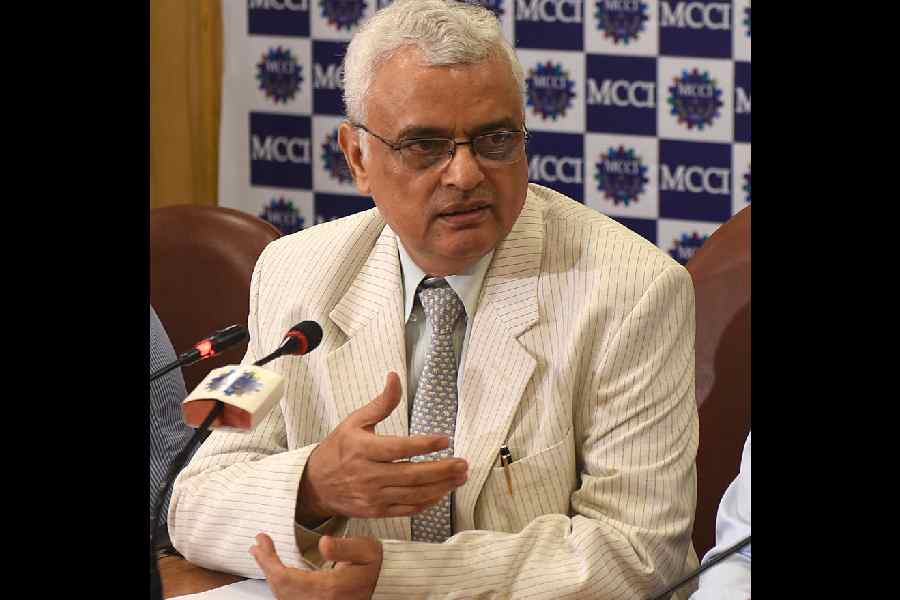 |
New Delhi, Aug. 20: A microcontinent that lies submerged beneath the southern Indian Ocean near Antarctica was once a part of the Indian landmass that was sundered and sunk by ancient geological processes, studies have revealed.
Scientists from India, the US and Australia have recon structed the history of the break-away micro-continent using clues from the Bay of Bengal, India’s Eastern Ghat mountains, and the undersea plateau that seafloor mappers have named Elan Bank.
Elan Bank is about 140,000 square kilometres in area — nearly the size of Bangladesh — and lies about 1,200m below the sea surface, about 1,000km from eastern Antarctica.
In the latest study, scien tists from the National Insti tute of Oceanography, Goa, and the Space Applications Centre, Ahmedabad, have de scribed the tectonic history of the breakup of India from Antarctica 130 million years ago and the excision of Elan Bank from eastern India 120 million years ago. They re ported their findings earlier this year in the Journal of Geophysical Research.
“All the evidence put to gether tells us that Elan Bank tore itself away from a region along the east coast of India between Orissa and Andhra Pradesh,” said Kolluru Sree Krishna, a senior NIO scien tist.
The earliest hints of India’s lost land had emerged eight years ago when geo chemists at the Massachusetts Institute of Technology and the Free University of Brus sels had discovered fragments of continental crust in Elan bank rocks.
“It was a great surprise to find continental crust deep under the ocean,” said Freder ick Frey, professor of geo chemistry at MIT. “The rocks from Elan Bank were old and did not appear anything like oceanic rocks,” Frey told The Telegraph.
Frey and his collaborators, Dominique Weis, a geo chemist at the Free University of Brussels and her doctoral student Stephanie Ingle, pub lished a paper in The Journal of Petrology in 2002 where they reported that chemical signatures in rocks from the Elan Bank have similarities with rocks from India’s East ern Ghats.
A year later, Irina Borisso va a scientist with Australia’s national geological survey generated fresh data to sup port the continental origins of Elan Bank . Geologists know that oceanic crust is thinner than continental crust. The crust beneath the ocean is only about 6km thick. Borisso va found that Elan Bank crust was at least 16km thick, and its top two kilometres were made up of volcanic rocks.
In their new study, Krishna and his colleagues have used gravity patterns and structur al features beneath the seabed in the Bay of Bengal to de scribe how India first separat ed from Gondwanaland — the Australia-Antarctica-India su percontinent — and then lost Elan Bank.
“This new work adds geo physical evidence for those events,” Frey said.
India separated from Gondwanaland about 130 mil lion years ago and drifted northward to eventually col lide with Asia 40 million years ago. But early during its move ment, Elan Bank broke away.
The Indian landmass is it self made up of smaller conti nental blocks — the Dharwar, Bundelkhand, and Bastar cratons, among others. These are small landmasses that came together between two billion and four billion years ago to give India its peninsular shape — long before the era of Gondwanaland .
“The areas joining these cratons are relatively weak and may give way to tectonic adjustments,” Krishna said. “Elan Bank may have been such a distinct craton-like continental block that was a part of India.
” As Indian continental plate continued to draft northward, Elan Bank remained close to Antarctica. Scientists are still unclear when it went under the sea, but the process is likely to have occurred over several million years.
The studies by Borissova and her colleagues who have drilled into Elan Bank indicate that extensive volcanism occurred around 108 million years ago and significantly altered the micro-continent.
“Volcanism may have contributed to the submergence of Elan Bank,” said Krishna. “Extensive volcanism would have added enormous weight to the micro-continent, which might have eventually caused it to sink into the sea,” he said.










